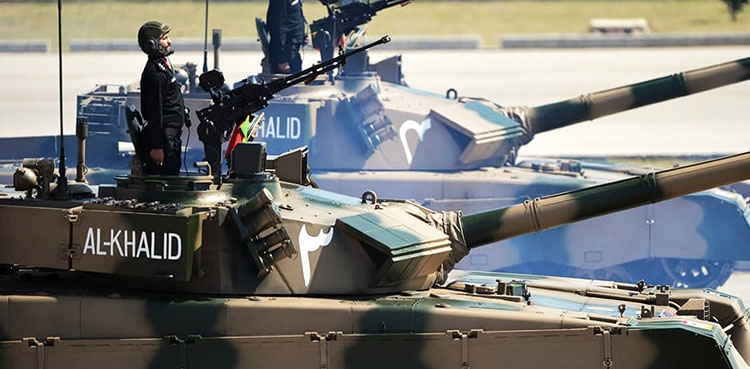Pakistan celebrated its 76th Independence Day last month amid an ever-worsening economic crisis. Meanwhile, the current global geopolitical upheaval has accelerated defense spending to an unprecedented $2.24 trillion with the focus shifting to lethal and attritional unmanned systems, following their success in the Nagorno-Karabakh war and most recently Russo-Ukraine conflict. This rise in demand for unmanned systems presents an opportunity for the Pakistani defense industry to capitalize on the relatively cost-effective nature of UAS development, utilize its skilled manpower, and collaborate with friendly nations. Which could in turn contribute to Pakistan’s ailing economy through exports, import substitution, foreign investment, and job creation.
The 21st century brought along with it sanctions, turbulent geopolitics, and economic limitations that forced us to look eastwards and inwards for our defense needs. China rose to the occasion and consistently provided technical assistance and know-how which greatly enhanced our military-industrial complex. The JF-17 Thunder and Burraq UAV among multiple other weapon systems in our arsenal today, are a living example of this cooperation. Likewise, Türkiye, which is the current leader in unmanned systems development, has also shown its eagerness to collaborate and transfer technology to Pakistan. As a result, TAI and Baykar, have set up R&D centers in Pakistan focusing on UCAVs, smart munitions, and advanced fighters. This foreign collaboration has not only given Pakistan access to advanced technologies, but it has also led to foreign investment and pooling of resources, both of which are essential for our strained economy.
Moreover, Pakistan’s defense doctrine has evolved to include asymmetric force multipliers to offset the Indian numerical advantage and economical prowess. This includes multi-million-dollar procurements of advanced UCAVs across the tri-services as well as proliferation of drones at a tactical level in COIN operations. However, these inductions have led to an increase in the import bill which cannot be sustained by Pakistan’s current account. However, the defense industry can reduce this import bill by providing indigenous systems to the armed forces. The Shahpar series of UCAVs as well as various tactical drones and loitering munitions manufactured by GIDS, PoF, and private players including Woot Tech and Caval Air can provide the armed forces with similar capabilities at a fraction of the cost.
Likewise, it is not only Pakistan’s military, but rather militaries across the globe that are eyeing unmanned platforms due to their efficacy and low-cost. As a result, US, Chinese and especially Turkish firms are seeing a boom in sales, with the Bayraktar TB-2 now in service with 20+ countries. While defense deals are substantially political in nature, Pakistan can still market its own defense systems in Africa, Latin America, Central Asia, and MENA regions through defense expos, diplomatic outreach, military diplomacy and offering attractive pricing and training programs. Success in this regard can not only lead to stronger diplomatic ties but also earn the country precious foreign exchange.
At present, Pakistan is grappling with excessive brain-drain due lack of jobs because of economic instability. This is extremely detrimental in the long-term as the size of educated and capable manpower is shrinking. On the other hand, the defense industry requires competent individuals for it to succeed given its high-tech nature. Recently, the establishment of NASTP and associated infrastructure has generated a considerable number of jobs and evidently, the more productive this industry becomes the more opportunities we can provide to our workforce. This will also translate to better industry-academia linkages, foster a culture of R&D and the technological gain will be a long-term investment that will benefit the country’s development downstream.
In conclusion, Pakistan’s defense industry today is well-placed to capture a piece of the pie as defense expenditures rise and demand for high-tech unmanned systems grows. Thus, Pakistan can transition its defense prowess into economic prosperity through exports, substituting imports, utilizing human resource, and nurturing foreign collaborations. However, this can only be attained if the military-industrial complex and the private sector work together and the government fully supports them with the policies and resources they need to succeed.
Table of Contents
ToggleMuhaimin Zia
Muhaimin Zia is a student of Mechanical Engineering at National University of Sciences and Technology (NUST). He has keen interest in global defense industry and weapon systems.












